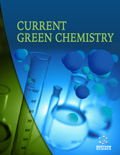Abstract
Advancement in green synthetic methodologies has brought a revolution in heterocyclic synthesis. Green synthesis has bypassed the classical procedures involving toxic/hazardous solvents or catalysts and improved the current environmental safety standards by many folds. Green chemistry research has continuously made significant contributions to the development of heterocyclic scaffolds both at laboratory and commercial scales. Researchers are continuously developing and exploring the principles of green chemistry for the development of novel therapeutic agents. Quinoxaline lies in the category of versatile heterocyclic motifs, which possesses a wide diversity in its derivatives as well as a broad profile of its therapeutic potential. In the past decades, many new green synthetic protocols have been developed and employed successfully for the synthesis of quinoxaline derivatives. These include the use of reusable nanocatalysts, polymers, various green solvents, tonsils, catalysts, water as a catalyst, microwave irradiation, ultrasonic waves, non-toxic metal catalysts, surfactants, etc. The present review focuses on various green synthetic procedures reported for quinoxalines along with the specializations and applications of the reactions.
Keywords: Green synthesis, quinoxaline, polymers, microwave irradiation, tonsil clay, versatile.
[http://dx.doi.org/10.1016/j.ejmech.2015.11.031] [PMID: 26686931]
[http://dx.doi.org/10.3390/molecules25122784] [PMID: 32560203]
[http://dx.doi.org/10.1016/j.bmcl.2006.09.040] [PMID: 17027265]
[http://dx.doi.org/10.1002/jhet.3716]
[http://dx.doi.org/10.1016/j.bmc.2006.04.029] [PMID: 16806945]
[http://dx.doi.org/10.1002/ardp.200700024] [PMID: 17567824]
[http://dx.doi.org/10.1016/j.bmcl.2018.04.043] [PMID: 29748048]
[http://dx.doi.org/10.1016/j.ejmech.2014.03.010] [PMID: 24650715]
[http://dx.doi.org/10.1021/cm047705a]
[http://dx.doi.org/10.1016/j.porgcoat.2007.07.024]
[http://dx.doi.org/10.1039/b104674h]
[http://dx.doi.org/10.1016/j.corsci.2014.03.008]
[http://dx.doi.org/10.1016/j.ejmech.2014.06.058] [PMID: 25011559]
[http://dx.doi.org/10.1016/S0040-4039(02)00715-3]
[http://dx.doi.org/10.1002/jhet.5570450637]
[http://dx.doi.org/10.1016/j.tetlet.2007.06.065]
[http://dx.doi.org/10.1016/j.catcom.2007.10.024]
[http://dx.doi.org/10.1021/acscatal.8b02208] [PMID: 31080687]
[http://dx.doi.org/10.1039/C9CC09649C] [PMID: 32347834]
[http://dx.doi.org/10.3998/ark.5550190.0009.d04]
[http://dx.doi.org/10.1002/jhet.5570450135]
[http://dx.doi.org/10.1016/j.bmc.2012.02.022] [PMID: 22386982]
[http://dx.doi.org/10.2478/acph-2019-0013] [PMID: 31259731]
[http://dx.doi.org/10.1016/j.bmcl.2011.02.055] [PMID: 21376584]
[http://dx.doi.org/10.1007/978-3-319-04900-7_3] [PMID: 25296439]
[http://dx.doi.org/10.1002/9780470988305]
[http://dx.doi.org/10.1073/pnas.0804348105] [PMID: 18768813]
[http://dx.doi.org/10.1002/anie.200462883] [PMID: 15844112]
[http://dx.doi.org/10.1023/B:CATL.0000029532.80684.6c]
[http://dx.doi.org/10.1016/j.catcom.2006.06.033]
[http://dx.doi.org/10.1016/j.jscs.2012.07.014]
[http://dx.doi.org/10.1016/j.arabjc.2013.11.021]
[http://dx.doi.org/10.1081/SCC-200050347]
[http://dx.doi.org/10.1016/j.crci.2009.01.006]
[http://dx.doi.org/10.1016/j.tetlet.2007.06.036]
[http://dx.doi.org/10.1126/science.297.5582.807] [PMID: 12161647]
[http://dx.doi.org/10.1039/B507207G] [PMID: 16365643]
[http://dx.doi.org/10.1016/j.catcom.2006.06.013]
[http://dx.doi.org/10.1039/b600568n] [PMID: 17009450]
[http://dx.doi.org/10.1080/00397910701489388]
[http://dx.doi.org/10.1248/cpb.56.79] [PMID: 18175980]
[http://dx.doi.org/10.1039/C8GC03744B]
[http://dx.doi.org/10.5267/j.ccl.2014.3.002]
[http://dx.doi.org/10.1021/ja026290w] [PMID: 12022828]
[http://dx.doi.org/10.1016/j.crci.2013.12.005]
[http://dx.doi.org/10.1007/s11814-009-0111-0]
[http://dx.doi.org/10.1016/j.catcom.2007.07.003]
[http://dx.doi.org/10.4067/S0717-97072016000100018]
[http://dx.doi.org/10.22631/ajgc.2017.46496]
[http://dx.doi.org/10.2174/1570178614666161216122522]
[http://dx.doi.org/10.1016/j.ultsonch.2007.01.002] [PMID: 17350316]
[http://dx.doi.org/10.1590/S0103-50532009000900016]
[http://dx.doi.org/10.1016/j.tet.2009.01.105]
[http://dx.doi.org/10.1039/B815717K] [PMID: 20419202]
[http://dx.doi.org/10.1007/s11172-013-0171-5]
[http://dx.doi.org/10.1590/S0103-50532007000200009]
[http://dx.doi.org/10.1080/00397911.2017.1337153]
[http://dx.doi.org/10.3390/molecules17055164] [PMID: 22628038]
[http://dx.doi.org/10.1080/00304948.2019.1596469]
[http://dx.doi.org/10.1016/j.tet.2005.09.122]
[http://dx.doi.org/10.1016/j.tet.2005.09.138]
[http://dx.doi.org/10.1016/j.tetlet.2004.05.153]
[http://dx.doi.org/10.3390/molecules14051915] [PMID: 19471211]
[http://dx.doi.org/10.1100/2012/174784]
[http://dx.doi.org/10.1007/s12039-012-0285-6]
[http://dx.doi.org/10.1007/s12039-017-1235-0]
[http://dx.doi.org/10.1080/17518253.2013.772245]
[http://dx.doi.org/10.1246/cl.2006.238]
[http://dx.doi.org/10.1016/j.ultsonch.2010.08.009] [PMID: 20826107]
[http://dx.doi.org/10.1080/17518253.2011.606849]
[http://dx.doi.org/10.1007/s10562-007-9335-y]
[http://dx.doi.org/10.1080/00397910802406737]
[http://dx.doi.org/10.1007/s11164-015-2075-5]
[http://dx.doi.org/10.1016/j.catcom.2005.12.021]
[http://dx.doi.org/10.1016/j.molcata.2006.03.077]
[http://dx.doi.org/10.1016/j.molcata.2005.06.003]
[http://dx.doi.org/10.1016/j.catcom.2005.11.016]
[http://dx.doi.org/10.1016/j.tetlet.2012.12.041]
[http://dx.doi.org/10.1039/C4GC01316F]




















